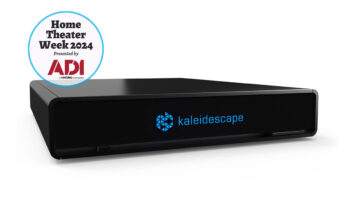Audiophiles have played a crucial role in the history of audio equipment design. One obvious example is evident in the advent of transistorized power amplifiers. When these new amplifiers first came out, design engineers said that they measured just as well or better than similarly rated power tube-type amplifiers, and therefore they must be as good. Audiophiles, listening to the amplifiers and immediately found problems; the low levels seemed “fuzzy.”
It was ultimately found that solid-state amplifiers were more susceptible to crossover distortion that affected only the low level output region, and because tube-type amplifiers had not typically suffered from this distortion, no one had developed a test for it. Once someone thought to run a test on low levels (which was easy), the problem was revealed. So the suite of tests on power amplifiers had to be increased to find this “new” distortion, just because the underlying technology had changed. Unfortunately, it is this point where audiophiles often part company with engineers, because once the problem is solved, they still hear it! The reputation of solid-state was tarnished because amplifiers once sounded bad, and it is reputation that counts.
There are many other such findings that one could make, including power supply rail-to-rail “snats” under reactive loads, safe-area protection circuit misbehavior, etc. Though there is a whole amplifier design story here, it shouldn’t be belabored. The fact remains that products are introduced with new technology, even though it is only later in the listening process that we may find that they haven’t been fully engineered. The new problems raised by the new technology aren’t covered by conventional evaluation mechanisms, including our hearing. Only after listening to components for a long time do we find problems.
Barry Blesser is a past president of the Audio Engineering Society and an early digital audio pioneer. In early digital reverberators, Blesser dealt with a large number of adjustable parameters in the design. The sound associated with one parameter bugged him, so he turned it down to just below the threshold for him and his design partner. They then shipped the product into the marketplace. People loved it at first, but after a few months began complaining that the sound was changing. Perhaps digital wasn’t as stable as it was acclaimed to be after all?
But thinking back to his earlier design experience, Blesser turned the offending parameter down some more. Then, the listeners loved it again. Incredulous, but true, audiophiles had become trained over a long period of time to hear an artifact that they missed at first.
Similarly, MPEG video on DVD and ATSC broadcast television has been around for some time. Early obvious defects have been largely suppressed through improved mastering, although problems do creep in on lower budget titles. After all, the best selling titles may be in the millions, but the least selling will be in the thousands; this is just how book publishing works, a business that is significantly influencing video. That means that your favorite obscure foreign film just has not received the same attention as Gladiator, but that is the economics of the situation.
Some of the audiophiles of yesteryear have become today’s videophiles, and they are starting to see some defects that were missed at first. Just as the whole process of digitizing vastly improved factors in the chain, the ghosts, video smearing, inconsistent color and other obvious defects of analog video have vanished. It seems as though a veil has been lifted, allowing us to see more clearly into the source.
In the place of obvious analog video defects, we accept certain MPEG artifacts, and people vary greatly in their susceptibility to these. This fact was recently tested, while sitting with professionals viewing the MPEG-coded master of an important title. The professional-quality monitor was driven directly digitally, thus eliminating all potential DAC problems in a player and some analog problems in the projector interface. (Although in this case with a CRT monitor, there were still professional DACs, now inside the monitor.)
Everyone in the room was exclaiming how good it looked, when one person, sitting the furthest from the 19-inch monitor said, “What’s wrong with the background wallpaper?” Nobody else spotted it. As the action in the foreground got more intense, the detail in the wallpaper decreased, since there were fewer bits to spend on the background while the coder tried to keep up with a changing foreground. And only one person among the professionals saw it, and he was seated farthest from the monitor!
Such persons are like proverbial canaries in a coal mine. They provide early warning signs that something is wrong, but what they find will bug only 0.1 percent of observers, for now. But what about later?
The web site www.hometheaterhifi.com points out (in their coverage of progressive scan) that they’ve found a chroma bug that affects MPEG decoders in players, and that many players have it, but that they’ve never noticed it up until now. Once you see it, though, then you will always see it.
This is just what we can expect: as viewers look at more and more hours of video provided by digital means, some of them are going to start to see problems. They will be able to distinguish DVD at an average 3.5 Mbps from broadcast ATSC Digital Television (in HD mode) at 19 Mbps, which are now locked together in the consumer’s mind as both being simply “digital” sources. (ATSC has far fewer artifacts as a result of its much higher bit rate, but that is not to say that it doesn’t have some…) This is just the way of the world, and what eventually drives progress. May it continue.
Tomlison Holman is president of TMH Corp. in Los Angeles







